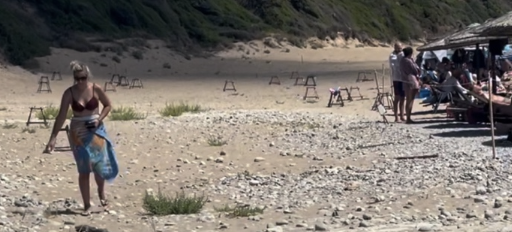Climate change: Will lead to sea level rise that will eventually destroy nests. Rising temperatures may lead to nests producing only females or no hatchlings at all. Sex is determined by the nest temperature. Cooler nests (<28oC) produce only males, warmer nests (>30oC) produce only females, which upsets the population balance. In addition, breeding areas suffer from rising sea levels, and hotter weather/increased temperatures, as well as stronger storms (which are climate change related occurrences) which can destroy nesting habitats, affecting nesting success rates. For example, nests become submerged in water which drowns young turtle hatchlings before they hatch from eggs, taking up to 100% of the nest (in 2012 40% of eggs were as a result of this). In 2015 there was a 30% drop in successful hatchlings, with a loss of 286 nests.
Threats to Sea Turtles
Threats to Sea Turtles From Human Activity
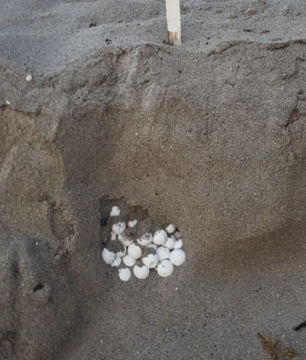
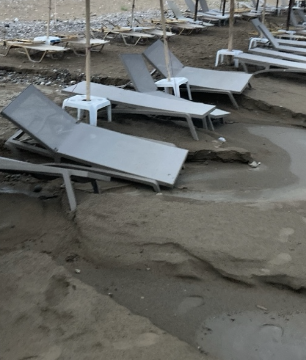
Unplanned & uncontrolled coastal development: Leads to the destruction of nesting beaches. Disappearing beaches where they go to nest, habitat degradation brought by coastal development causes nesting site disruption. As a result, hatchlings may become confused by artificial lights on beaches and wander away from the ocean, ultimately resulting in death. Breeding and nesting are therefore impacted by urban development, as well as coastal pollution contribution, which reduced reproductive success as a result of disruption on nesting places brought on by beachside buildings. Quality of sand composition on the nesting beaches is important to ensure good oxygenation of the eggs, and consequently the proper embryo development. Beach chairs and umbrellas should also be prohibited from sandy beaches except in specific areas, however on Gerakas Beach this is not the case and due to lack of patrol there is no enforcement on this rule amongst other rules when it comes to protection of sea turtles.
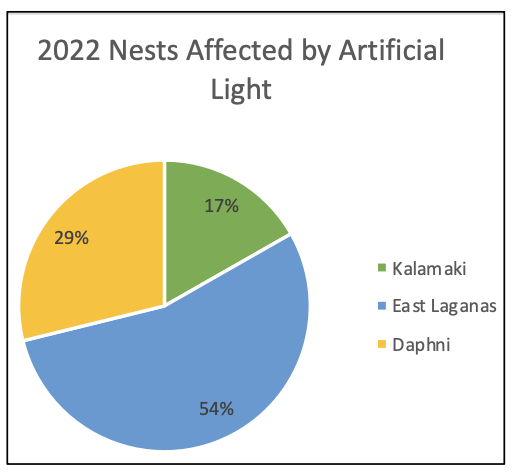
Source: 2022 Archelon Report
Light pollution: Disorientates hatchlings inland instead of to the sea. Adults too are disorientated causing them to abort emerging to nest. In 2022, on East Laganas (part of the NMPZ) 54% of nests were affected by artificial light, for example, the restaurant and bars on Daphni beach are in close proximity to the nests and as a result hatchling tracks have been found in the car park because artificial light has confused the hatchlings, and they haven’t made it to the sea.
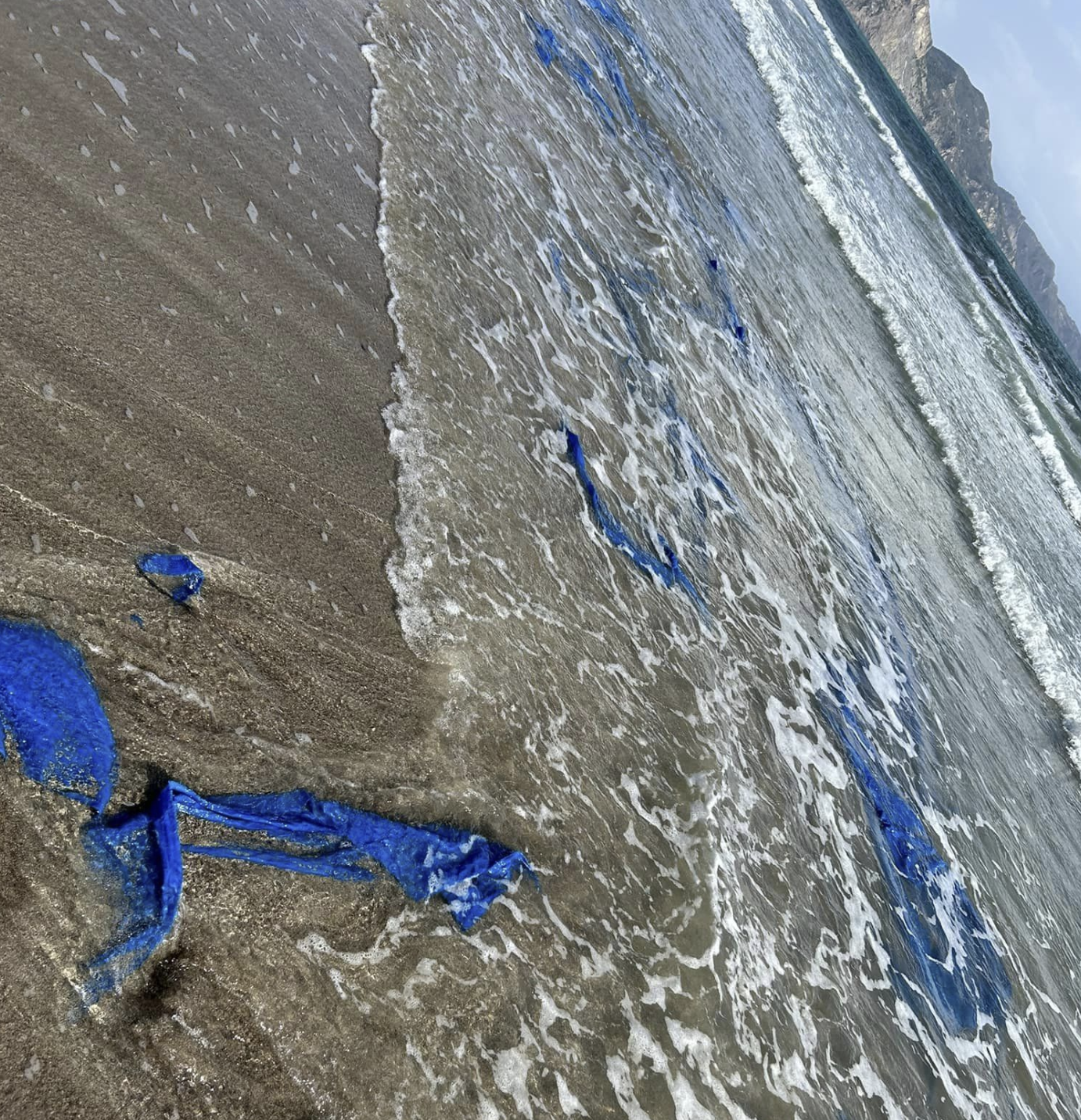
Marine Debris: Kills thousands of sea turtles and other marine creatures when they become entangled or mistake it for food resulting in ingestion, internal obstructions, wounds and starvation. On nesting beaches, garbage becomes a deadly trap for hatchlings, making them more vulnerable to predators. Toxic substances contained in plastics are passed up the food chain. Predators, like sea turtles, are worse affected.
Destructive fishing techniques: Damage or entirely destroyed important sea turtle feeding habitats such as seagrass beds.
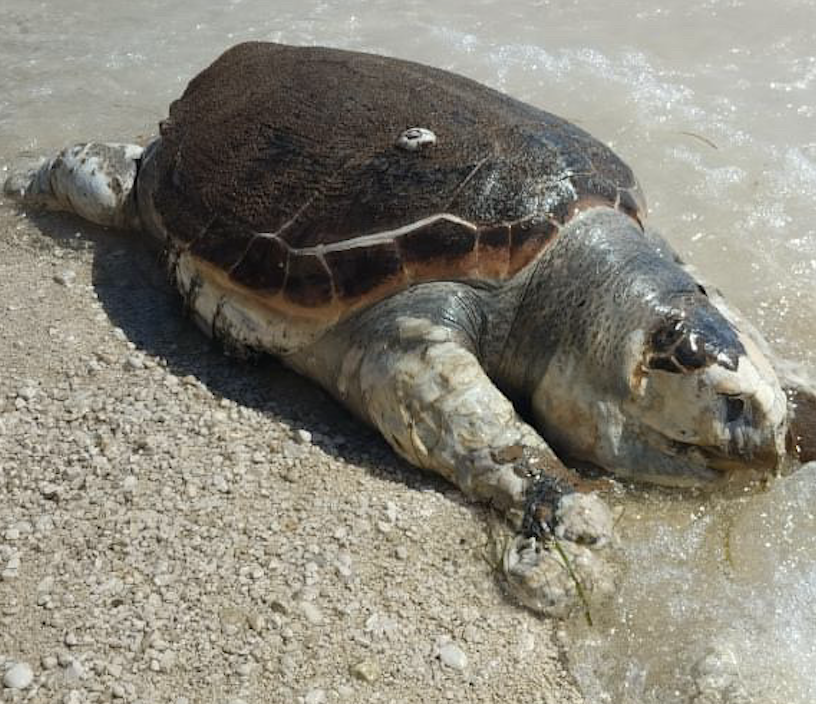
Incidental catch: Over 132,000 turtles are captured annually unintentionally by fishing gear causing at least 44,000 deaths. Their population is in decline due to bycatch, which is when turtles are accidentally caught in fishing nets, which results in serious injury and/or death by drowning.
“Ghost fishing”: When lost, abandoned or deliberately discarded fishing gear traps sea turtles and other marine creatures.
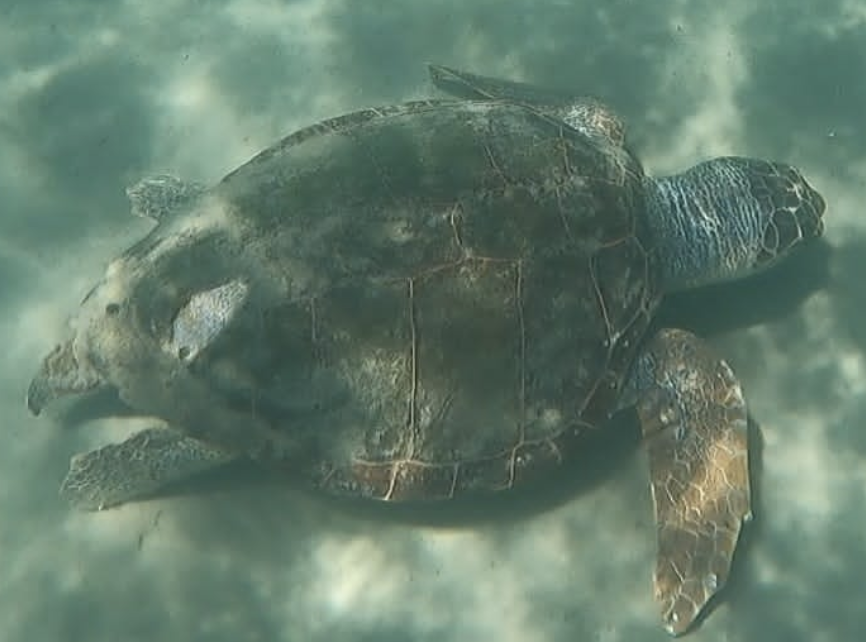
Oil spills: Affect turtles and their habitats at all stages of life, causing direct mortality, increased embryo mortality and development defects.
Exploitation: Of turtle eggs or turtles for consumption or artifacts. Although not frequent in the Mediterranean, turtle soup, turtle meat, and turtle eggs are eaten in South-west Pacific/Indian Ocean.
Intentional killing: During fishing activities is a relatively widespread practice in the Mediterranean.
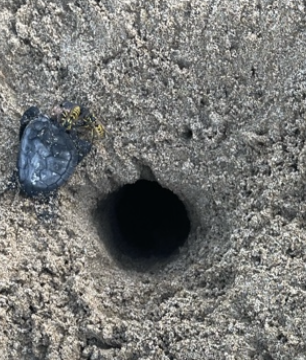
Ghost crabs: Fishing boats transported ghost crabs from the Red Sea and their population has significantly increased in the last 4 years – they take the vulnerable hatchlings to the crab nest and hide in the sand then throws out the parts they cannot eat a few days later. Crabs can take up to 100% of the nest. In the 2023 nesting season, during our morning surveys, we counted 184 dead hatchling carcasses on Gerakas Beach, illustrating the negative impact the invasive species have on the turtle population.
Seagulls: Take hatchlings out of the water resulting in a 0% survival rate, especially during daylight when hatchlings are more easily seen in the water.
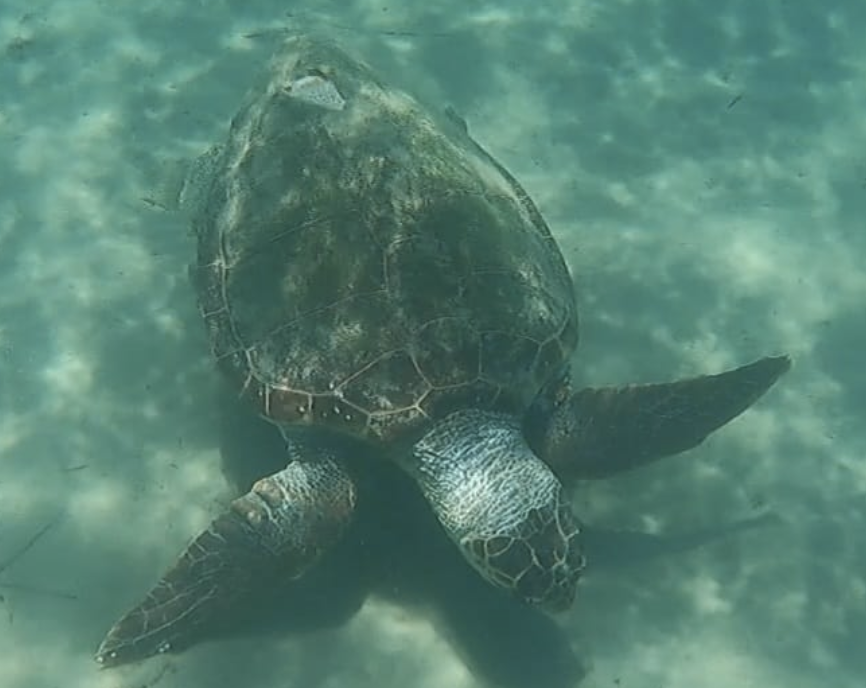
Turtle-spotting boats: Tour boats get too close to turtles, who if are carrying eggs ready to be laid on nesting beaches may become stressed and drop all their eggs in the sea, none of which will survive as it’s the wrong conditions. That is why the zones in the NMPZ and speed limits are essential to the preservation of sea turtles and why boat tours are not encouraged as they negatively impact the sea turtle population.
In 2022 there were several violations recorded within the National Marine Park of Zakynthos, for example there were 109 violations of boats surrounding turtles, when there should be a maximum of 2 vessels at one time, with an 8.5 average of total boats surround a turtle, which varied between 3 and 28 boats total surrounding a turtle at once. There is also a minimum distance of 15 metres, and to approach from the side of avoid eye contact with the turtle, which was violated 134 times, and 584 incidents of observing a turtle for more than 10 minutes, which further stresses the turtle.
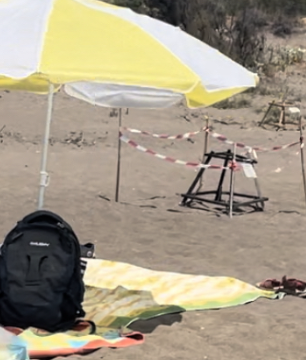
Limitations: The NMPZ was established in 2000 and suffered financial cuts in 2010 during the season, with only 18 staff down from 80 in previous years in their employ to warden beaches and administration. Therefore, beaches do not have 24-hour patrols due to lack of funding and resources. As of 2024 there are only 3 wardens to patrol and manage all of the protected beaches in the NMPZ!
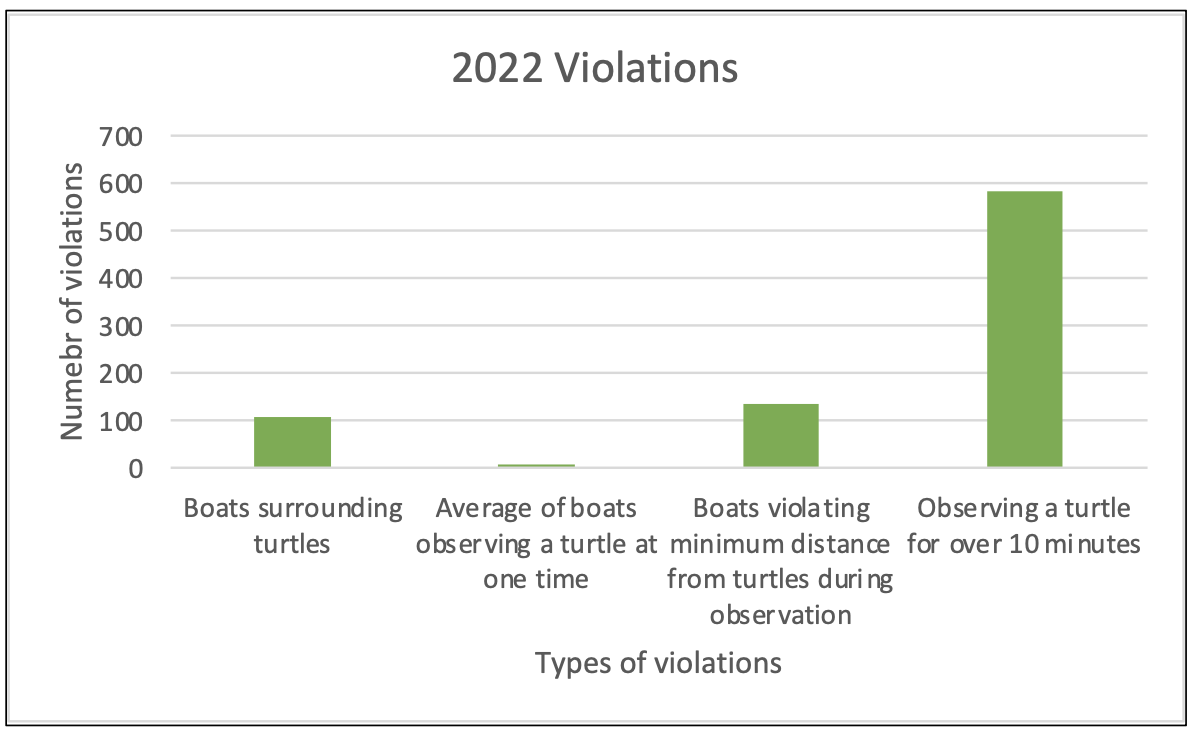
Source: 2022 Archelon Report
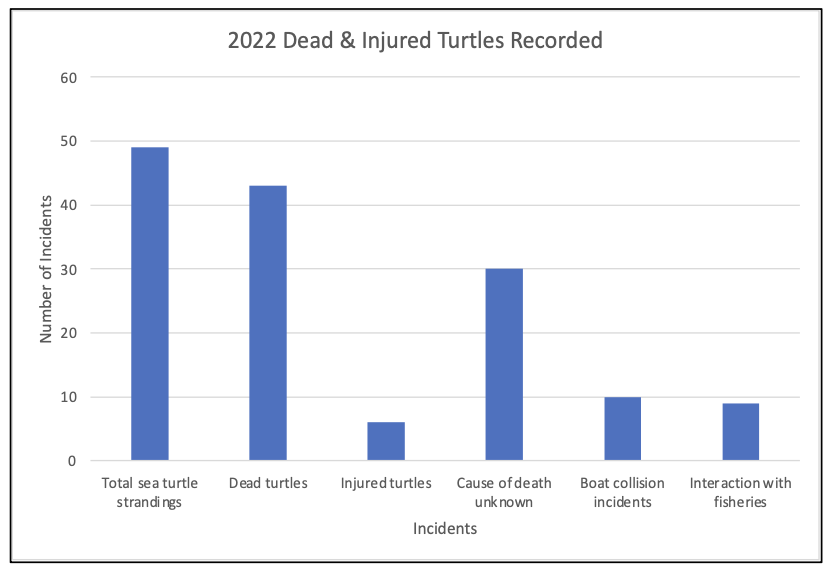
Source: 2022 Archelon Report
Tourists: Tourists do not adhere to the rules with the sole aim of ‘seeing a turtle’, putting the turtles at risk. Vibrations from tourists walking too close to nests can wake hatchlings before the appropriate time, thus they are not strong enough and not likely to make it, especially during the day as they battle additional threats including sunlight (resulting in burns and dehydration and death) and predators (including birds and marine life). Illegal umbrellas brought by tourists and screwed into the sand are at risk of hitting an unmarked nest and therefore impaling hatchling eggs, resulting in death. If holes in the sand are dug and not filled back in, hatchlings on their journey to the sea may fall into the hole and not be able to climb their way out, meaning they will be stuck down there and waste their energy and die. In addition, if a unmarked nest is on the public side of the barrier, or beyond the barrier, members of the public will unknowingly be too close to a nest with the risk of damaging the nest (for example piercing the nest with illegal umbrellas), or sitting and walking on the nest (vibrations cause hatchling to leave the nest too early and during the day, resulting in a 0% chance of survival).
There is a barrier on Gerakas Beach, however there is no barrier on Daphni Beach to prevent tourists from walking too close to turtle nests and potentially damaging them.
In 2022, as shown in the graph, there were 49 sea turtle stranding recorded on Zakynthos, 13 of which were located within the NMPZ within the first 10 months of 2022. 43 out of the 49 strandings were dead turtles, the remaining 6 were injured, with 10 of the incidents being a clear result of a boat collision.
Therefore, there is a need for prevention methods including beach conservation, marine debris management, mitigation of bycatch, and climate change.
